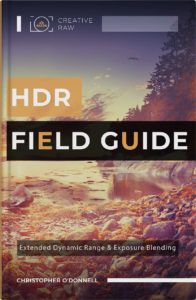Easy Steps to Prevent (and Reverse) Camera Condensation
Easy Steps to Prevent (and Reverse) Camera Condensation
Condensation forms on your lens when you have dramatic temperature and/or humidity changes and your camera is not protected from the elements. When your gear hits that dramatic change of air, condensation forms while the temperature regulates….which can definitely be worrisome on your expensive gear.
Don’t panic! A few rounds of condensation won’t ruin your camera, nor will your lens fogging up cause any permanent damage. However, you should definitely take some easy steps to prevent this from becoming a habit. Too many cycles can begin to wear on your gear, especially on the internal mechanisms.
During the summer months, condensation forms most often when your bring your camera from a cold and dry environment (an air-conditioned house or car) and out to the hot and humid air. That’s a huge environmental change and will introduce moisture quickly!
I live in New England, so winter is when I experience condensation the most. If I bring my camera inside to a warm and toasty house after a day of shooting in freezing temperatures, the lens will fog up almost instantaneously.
Acclimation is your friend!
The goal here is to introduce these dramatic temperature/humidity changes slowly, and to make sure this air does not hit your glass directly. It’s incredibly easy to prevent condensation; it just takes a little patience.
Before entering an environment that is drastically different from the one you’re in, make sure your gear is securely in your camera bag and all zippers are closed. That’s it!
Most camera bags are padded quite well to protect your gear. This padding also acts as insulation, which helps to regulate sharp changes to the air and allows your gear to acclimate slowly to the new environment.
Depending on the temperature differences and how substantial your gear is (think 50mm prime lens vs. a 400mm telephoto), you may need to leave your gear in the bag for several hours to fully acclimate. However, it’s the sure-fire way to prevent any condensation from building up – and incredibly easy to remember.
For extra protection, you can place your camera inside of a plastic ziploc bag and then place that into your camera bag – do this BEFORE stepping into your new environment. This will provide another layer of protection and prevent the new air temperature from hitting your camera directly.
Too late! My camera is already foggy.
If you have condensation on your camera already, follow these steps:
- Don’t wipe the lens! This will do nothing but give you streaks you will have to remove from your glass or filter. The condensation is already there, you just have to let it dissipate naturally.
- Don’t detach the lens if it’s already attached – leave your camera be. You do not want to introduce more condensation to the other end of your lens or the internals of your camera.
- Put it in an airtight bag and get as much air out of it as you can. It would also help to put something in the bag to wick moisture away – such as a towel or preferably uncooked rice.
- Wait until the camera comes up to temperature and all condensation has dissipated.
For severe cases where your camera is still taking foggy-looking photos, you may have to work on this for several days. Instead of a towel, it would be better to place silica gel packs in the plastic bag to help dry out all the interior components. Make sure you keep the bag airtight though so that the gel packs wick the moisture from the camera and not the air itself.
It’s best to avoid condensation altogether, but it’s only the most severe cases where much moisture and water has entered the camera will there be any permanent damage – so don’t fret if your camera fogs up a few times. If your camera is still working, you should be fine – just try to avoid future cycles of condensation.
It’s also important to note that some camera companies will not do warranty repairs to your gear due to condensation damage (as they consider it water damage), so that’s another reason to take a few easy steps and prevent condensation altogether!



